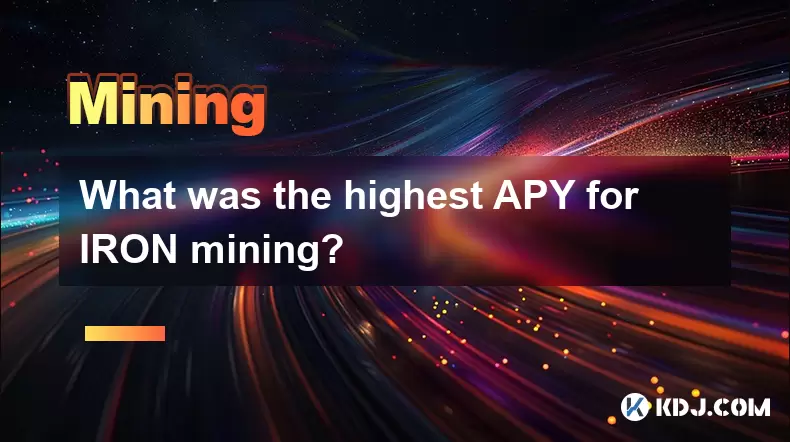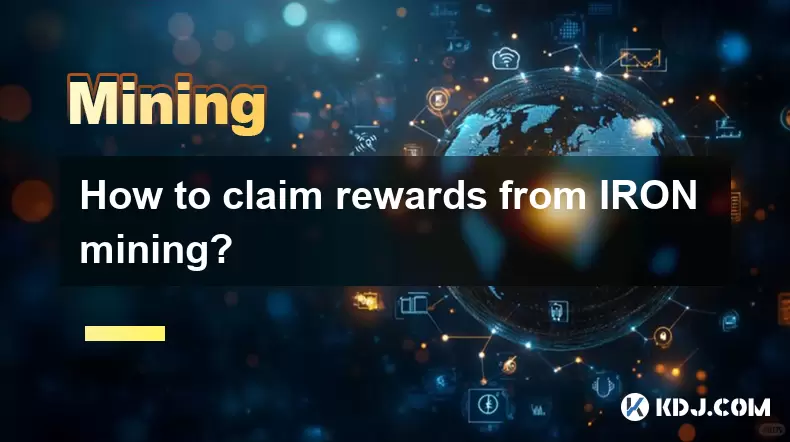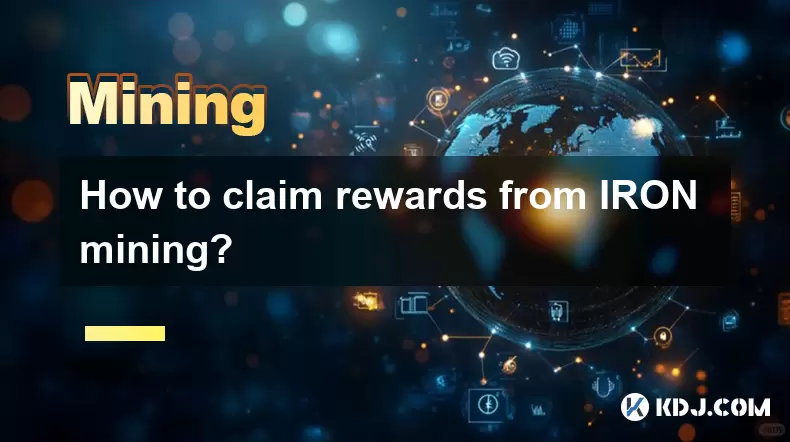-
 Bitcoin
Bitcoin $115000
0.12% -
 Ethereum
Ethereum $3701
4.50% -
 XRP
XRP $3.081
2.99% -
 Tether USDt
Tether USDt $0.0000
-0.01% -
 BNB
BNB $767.9
1.45% -
 Solana
Solana $169.5
3.13% -
 USDC
USDC $0.9999
0.01% -
 Dogecoin
Dogecoin $0.2106
4.30% -
 TRON
TRON $0.3334
1.62% -
 Cardano
Cardano $0.7564
2.54% -
 Stellar
Stellar $0.4165
0.76% -
 Hyperliquid
Hyperliquid $38.75
0.25% -
 Sui
Sui $3.593
3.00% -
 Chainlink
Chainlink $17.08
3.59% -
 Bitcoin Cash
Bitcoin Cash $573.6
4.35% -
 Hedera
Hedera $0.2508
-0.84% -
 Avalanche
Avalanche $23.07
6.46% -
 Ethena USDe
Ethena USDe $1.001
-0.02% -
 Litecoin
Litecoin $120.8
8.17% -
 UNUS SED LEO
UNUS SED LEO $8.943
-0.32% -
 Toncoin
Toncoin $3.400
-5.60% -
 Shiba Inu
Shiba Inu $0.00001255
1.54% -
 Uniswap
Uniswap $9.908
6.32% -
 Polkadot
Polkadot $3.718
2.10% -
 Monero
Monero $303.0
-0.74% -
 Dai
Dai $0.9999
-0.02% -
 Bitget Token
Bitget Token $4.392
0.91% -
 Cronos
Cronos $0.1403
6.31% -
 Pepe
Pepe $0.00001076
1.13% -
 Aave
Aave $267.2
1.80%
Why does mining require a full node?
A full node is essential for mining as it validates transactions, ensures blockchain integrity, and enhances mining efficiency by reducing external dependencies.
Apr 08, 2025 at 06:49 pm

Mining in the cryptocurrency world is a complex process that involves verifying transactions and adding them to the blockchain. One of the key components required for mining is a full node. But why is a full node necessary for mining? Let's delve into the reasons and explore the intricacies of this requirement.
What is a Full Node?
A full node is a program that fully validates transactions and blocks. It stores the entire history of the blockchain, ensuring that all transactions are valid according to the rules of the network. Full nodes play a crucial role in maintaining the integrity and security of the blockchain.
The Role of Full Nodes in Mining
Mining involves solving complex mathematical problems to validate transactions and add them to the blockchain. To do this effectively, miners need to have access to the entire blockchain. Here's why a full node is essential for this process:
Validation of Transactions: Miners need to verify that the transactions they are including in a block are valid. A full node provides the necessary data to check the validity of these transactions against the entire history of the blockchain.
Blockchain Integrity: By running a full node, miners ensure that they are working with an accurate and up-to-date version of the blockchain. This is crucial for maintaining the integrity of the network and preventing fraudulent activities.
Network Consensus: Full nodes help miners stay in sync with the rest of the network. They receive and relay new blocks and transactions, ensuring that miners are always working on the most current version of the blockchain.
How Full Nodes Enhance Mining Efficiency
Running a full node can significantly enhance the efficiency of the mining process. Here are some ways in which full nodes contribute to mining efficiency:
Reduced Dependency on External Sources: By having a full node, miners do not need to rely on third-party services to access blockchain data. This reduces the risk of data manipulation and increases the reliability of the mining process.
Faster Transaction Verification: Full nodes allow miners to quickly verify transactions without needing to download data from other nodes. This speeds up the mining process and increases the chances of successfully mining a block.
Improved Security: Full nodes provide an additional layer of security by ensuring that miners are working with a complete and accurate version of the blockchain. This helps prevent attacks such as double-spending and 51% attacks.
Setting Up a Full Node for Mining
Setting up a full node for mining involves several steps. Here's a detailed guide on how to do it:
Choose the Right Hardware: Ensure that your hardware meets the minimum requirements for running a full node. This typically includes a powerful CPU, ample storage space, and a reliable internet connection.
Select the Appropriate Software: Depending on the cryptocurrency you are mining, you will need to download and install the appropriate full node software. For Bitcoin, you can use Bitcoin Core, while Ethereum miners can use Geth or Parity.
Download and Install the Software: Follow the installation instructions provided by the software developer. This usually involves downloading the software from the official website and following the installation wizard.
Configure the Node: Once the software is installed, you will need to configure it to connect to the blockchain network. This may involve setting up port forwarding, configuring firewall settings, and specifying the data directory.
Sync the Blockchain: After configuration, the full node will begin syncing with the blockchain. This process can take several hours or even days, depending on the size of the blockchain and the speed of your internet connection.
Start Mining: Once the full node is fully synced, you can start mining. Connect your mining software to the full node and begin the mining process.
The Importance of Full Node Maintenance
Maintaining a full node is crucial for ensuring the continued efficiency and security of the mining process. Here are some key aspects of full node maintenance:
Regular Updates: Keep your full node software up to date with the latest releases. This ensures that you have the latest security patches and features.
Monitoring: Regularly monitor the performance of your full node to ensure it is running smoothly. Check for any errors or issues that may affect its operation.
Backup: Regularly back up your full node data to prevent data loss in case of hardware failure or other issues.
Security Measures: Implement security measures such as firewalls, antivirus software, and strong passwords to protect your full node from potential attacks.
The Impact of Full Nodes on Network Decentralization
Full nodes play a vital role in maintaining the decentralization of the blockchain network. By running a full node, miners contribute to the decentralization of the network in several ways:
Distributed Validation: Full nodes distribute the validation process across the network, reducing the reliance on a central authority. This enhances the security and resilience of the blockchain.
Preventing Centralization: By running their own full nodes, miners prevent the centralization of the network. This ensures that no single entity can control the blockchain, maintaining its decentralized nature.
Supporting Network Growth: Full nodes support the growth of the network by providing additional points of validation and data storage. This helps the network scale and handle increasing transaction volumes.
Frequently Asked Questions
Q: Can I mine without a full node?
A: While it is technically possible to mine without a full node by relying on third-party services, it is not recommended. Mining without a full node increases the risk of data manipulation and reduces the security and efficiency of the mining process.
Q: How much storage space do I need for a full node?
A: The amount of storage space required for a full node depends on the size of the blockchain. For Bitcoin, you will need at least 500 GB of storage space, while Ethereum requires around 1 TB. It's important to have enough storage to accommodate future growth of the blockchain.
Q: Can I run a full node on a cloud server?
A: Yes, you can run a full node on a cloud server. This can be a convenient option if you do not have the necessary hardware at home. However, ensure that the cloud server meets the hardware requirements and has a reliable internet connection.
Q: How long does it take to sync a full node?
A: The time it takes to sync a full node can vary depending on the size of the blockchain and the speed of your internet connection. For Bitcoin, it can take anywhere from a few hours to several days. Ethereum may take a similar amount of time, depending on the current size of the blockchain.
Disclaimer:info@kdj.com
The information provided is not trading advice. kdj.com does not assume any responsibility for any investments made based on the information provided in this article. Cryptocurrencies are highly volatile and it is highly recommended that you invest with caution after thorough research!
If you believe that the content used on this website infringes your copyright, please contact us immediately (info@kdj.com) and we will delete it promptly.
- Cryptocurrency, Altcoins, and Profit Potential: Navigating the Wild West
- 2025-08-04 14:50:11
- Blue Gold & Crypto: Investing Disruption in Precious Metals
- 2025-08-04 14:30:11
- Japan, Metaplanet, and Bitcoin Acquisition: A New Era of Corporate Treasury?
- 2025-08-04 14:30:11
- Coinbase's Buy Rating & Bitcoin's Bold Future: A Canaccord Genuity Perspective
- 2025-08-04 14:50:11
- Coinbase's Buy Rating Maintained by Rosenblatt Securities: A Deep Dive
- 2025-08-04 14:55:11
- Cryptos, Strategic Choices, High Returns: Navigating the Meme Coin Mania
- 2025-08-04 14:55:11
Related knowledge

What was the highest APY for IRON mining?
Jul 23,2025 at 05:14am
Understanding IRON Token and Its Mining MechanismThe IRON token is a stablecoin that operates within the Iron Finance ecosystem, primarily on blockcha...

What is impermanent loss in IRON pools?
Jul 23,2025 at 09:00am
Understanding Impermanent Loss in the Context of IRON PoolsImpermanent loss is a phenomenon that affects liquidity providers in decentralized finance ...

How to claim rewards from IRON mining?
Jul 23,2025 at 02:21pm
Understanding IRON Mining and Reward MechanismsIRON Finance operated as a decentralized finance (DeFi) protocol on the Polygon and Binance Smart Chain...

How to claim rewards from IRON mining?
Jul 29,2025 at 05:07am
Understanding IRON Mining and Reward MechanismIRON is a dual-token system designed to stabilize the value of a synthetic asset through a combination o...

IRON mining tutorial for beginners
Jul 27,2025 at 12:01am
What Is IRON and How Does It Work in the Cryptocurrency Ecosystem?IRON is a cryptocurrency token that operates on the Binance Smart Chain (BSC) and is...

How to calculate APY for IRON mining?
Jul 28,2025 at 09:49am
Understanding APY in the Context of IRON Token MiningWhen engaging in IRON token mining within decentralized finance (DeFi) platforms, Annual Percenta...

What was the highest APY for IRON mining?
Jul 23,2025 at 05:14am
Understanding IRON Token and Its Mining MechanismThe IRON token is a stablecoin that operates within the Iron Finance ecosystem, primarily on blockcha...

What is impermanent loss in IRON pools?
Jul 23,2025 at 09:00am
Understanding Impermanent Loss in the Context of IRON PoolsImpermanent loss is a phenomenon that affects liquidity providers in decentralized finance ...

How to claim rewards from IRON mining?
Jul 23,2025 at 02:21pm
Understanding IRON Mining and Reward MechanismsIRON Finance operated as a decentralized finance (DeFi) protocol on the Polygon and Binance Smart Chain...

How to claim rewards from IRON mining?
Jul 29,2025 at 05:07am
Understanding IRON Mining and Reward MechanismIRON is a dual-token system designed to stabilize the value of a synthetic asset through a combination o...

IRON mining tutorial for beginners
Jul 27,2025 at 12:01am
What Is IRON and How Does It Work in the Cryptocurrency Ecosystem?IRON is a cryptocurrency token that operates on the Binance Smart Chain (BSC) and is...

How to calculate APY for IRON mining?
Jul 28,2025 at 09:49am
Understanding APY in the Context of IRON Token MiningWhen engaging in IRON token mining within decentralized finance (DeFi) platforms, Annual Percenta...
See all articles

























































































